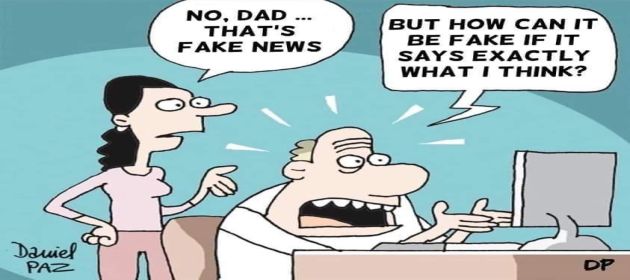In Why Is It So Hard To Spot Fake News? – Part 1, I listed six hacks for spotting fake news.
To recap, they were:
- Google It
- Check the URL
- Verify the Sender’s ID
- Check for Typos
- Believe only Official Channels
- Use a Fact-Check Service
I shared my experience with the first three hacks in the previous blog post.
In this Part 2 blog post, I’ll continue with the next three.
#4. Check for Typos
Typos have traditionally been a major tell of fake news.
But, these days, they’re losing their efficacy.
Let’s take this tweet posted by a guy who claimed that he got fired from “Times if India” (sic) after working there for 24 years.
Times if India? Fake news or of questionable value if can't avoid typo in name of company worked for for 24 years. Am a TOI reader for 45 years, didn't know there was a Sunday magazine. Or is that another typo?
— Ketharaman Swaminathan (@s_ketharaman) April 13, 2020
Times if India?
I thought, how can a guy, that too a wordsmith, misspell his employer’s name after working in that company for 24 years. Accordingly, I dismissed this as fake news.
But it later turned out that he had and that the news was genuine.
He’s not alone.
These days many many people make typos liberally. When called out, they either take the feedback personally and go into a shell or brush it off with smart alecky rejoinders like
- “as long as you get my meaning, how does it matter?”
- “don’t be a prude, dude”
- “it’s social media, not PhD thesis, get a life”.
The typo problem escalates to the next level if the sender is an iPhone user. The flaky iOS autocorrect causes untold agony to receivers of messages typed out on an iPhone. I recently requested a friend to send me WhatsApp messages from a non-iOS platform like Windows Laptop or Android Smartphone so that I’m saved from the Apple Autocorrect Agony caused by his messages!
The days of using typos to spot fake news are long gone.
#5. Believe only Official Channels
We’ve seen warnings of the following nature issued by Ratan Tata, Raghuram Rajan and a few other eminent personalities:
“Don’t believe what you read about me here and there, I publish things only on my official channels.”
But many of them don’t specify what their official channels are. So it again becomes a matter of guesswork, the ideal breeding ground for fake news.
#6. Use a Fact-Check Service
With due respect to the plethora of fact-check services around, I don’t know what’s their claim to fame in this field or the basis on which the Alt-News, @PIBFactChecks, et al distinguish between genuine and fake news.
Despite that, I parked my skepticism and used a couple of these services for a while.
Until I totally gave up on them when a leading fact-check website tagged a Facebook Video as fake news based on what it saw in a TikTok video!
As we can see, all the six tactics to spot fake news suffer from many False Positives and False Negatives. Which makes the job of distinguishing between genuine news and fake news very challenging.
But despair not.
I’ll reveal a brilliant way to overcome this challenge in a follow-on post. Spoiler Alert: It’s not one of the six hacks covered so far.

